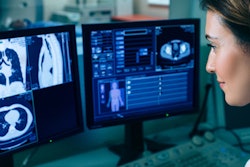
Teleradiology offers some important benefits, such as after-hours and multispecialty coverage. But some say its cons outweigh its pros, citing the commoditization of radiology and decreased quality of image interpretation.
So, is teleradiology a blessing or a curse? It's probably a mix of both, according to a study published online July 1 in the Journal of the American College of Radiology.
Radiologists have long had mixed opinions about the practice, wrote a team led by Dr. Andrew Rosenkrantz of NYU Langone Medical Center.
"Teleradiology, defined as the interpretation of imaging examinations obtained at a facility geographically separate from where the examination was performed, has faced mixed perceptions within the radiology community," the group wrote.
The concern has been that teleradiology disconnects radiologists from their hospital contracts and sparks turf wars with other specialties. But it also allows radiology practices to offer broader geographic access for patients to imaging services.
How do teleradiology's pros and cons weigh out? It's tricky, according to the researchers.
"The successful implementation of teleradiology faces a wide range of potential challenges, including a lack of proximity for the interpreting radiologist with the technologist, the referring physician, as well as other radiologists; complex IT integration needs leading to potential difficulty in accessing prior imaging examinations and the patient's record, ... [and] credentialing, reimbursement, and quality assurance issues," the authors wrote.
To understand what radiologists truly think about teleradiology and how much it is practiced, Rosenkrantz and colleagues conducted a national survey among American College of Radiology members. The sample included 937 respondents, 87 of whom were teleradiologists and 731 of whom were not.
Of the 731 nonteleradiologist respondents, 85.6% had performed teleradiology within the past decade, and 25.4% stated that teleradiology made up more than half of their annual reading volume. As practice size increased, so did teleradiology duties.
| Teleradiology by radiologist type, setting, practice size, and years in practice | ||||
| Type of radiologist | Interpret offsite exams within past 10 years | > 50% of annual imaging interpretation volume is offsite | Interpret offsite rural exams | Interpret offsite critical care hospital exams |
| Teleradiologists | 100% | 97.5% | 57% | 60.8% |
| Nonteleradiologists overall | 85.6% | 25.4% | 46.2% | 37.2% |
| Nonteleradiologists by setting | ||||
| Academic hospital | 85.5% | 18.6% | 28.6% | 38.1% |
| Community-based hospital | 85.1% | 23.2% | 55% | 40.6% |
| Freestanding imaging or oncology center | 91.4% | 38.7% | 20.7% | 27.6% |
| Nonteleradiologists by group size | ||||
| < 10 | 79.1% | 19.7% | 44.4% | 28.3% |
| 10-24 | 83.9% | 17.4% | 49.7% | 33.6% |
| 25-49 | 84.9% | 24.1% | 49.4% | 44.9% |
| 50-99 | 93.8% | 30.5% | 34.3% | 37.1% |
| Nonteleradiologists by years in practice | ||||
| < 10 | 83.6% | 28.1% | 52.9% | 45.1% |
| 10-25 | 86.4% | 27.2% | 47.1% | 39% |
| > 25 | 85.8% | 21.8% | 41.1% | 30.4% |
The study findings suggest that, whether it's a blessing or a curse, teleradiology is here to stay, according to Rosenkrantz and colleagues.
"Despite historic concerns regarding the potential adverse impact of teleradiology on radiology practice, our present national survey demonstrates a critical and central role of teleradiology in modern radiology practice," the team wrote. "Based on the survey responses, teleradiology is ubiquitous across radiologists of different work settings, career stages, and subspecialties."




















